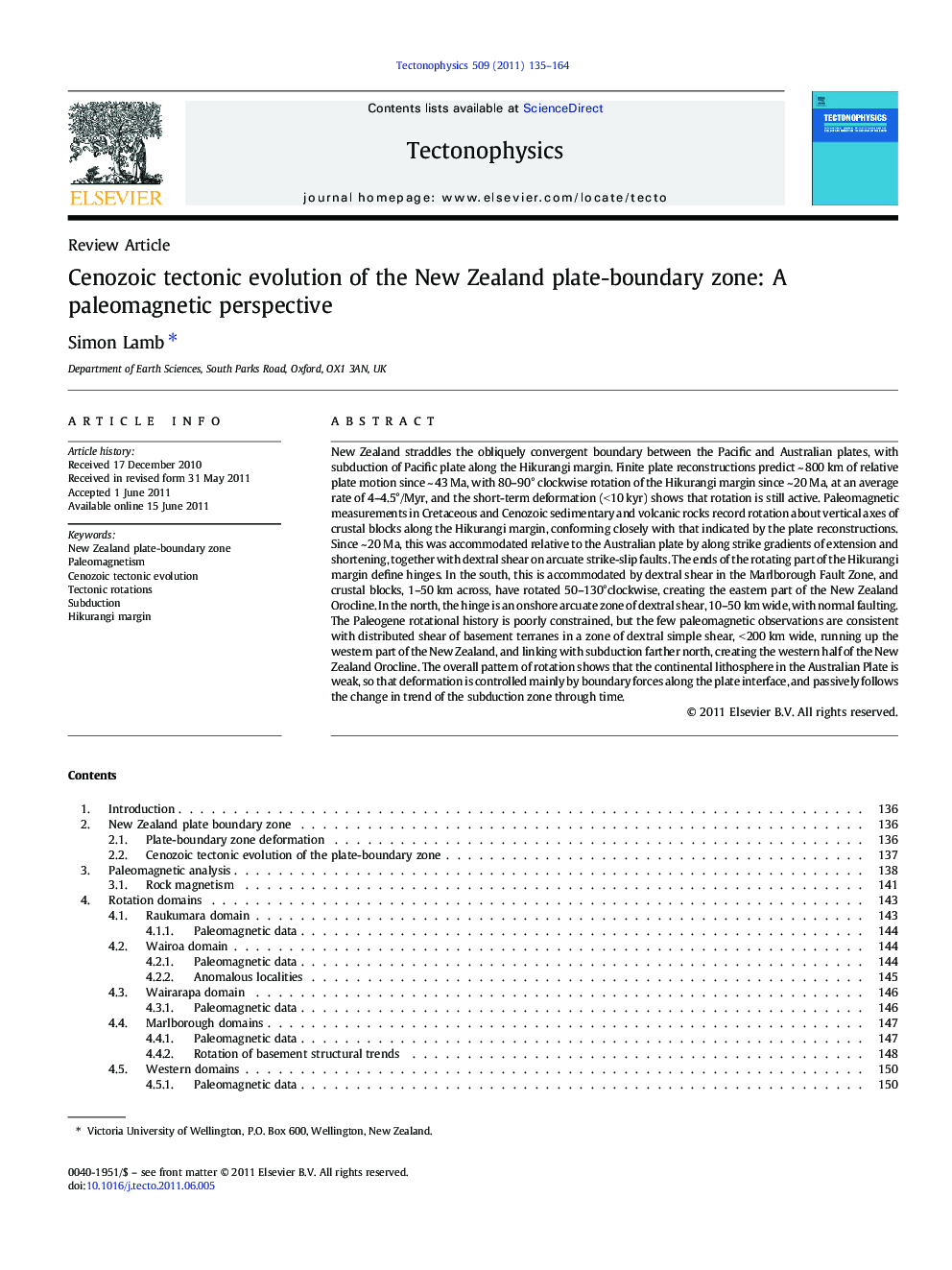| Article ID | Journal | Published Year | Pages | File Type |
|---|---|---|---|---|
| 4693095 | Tectonophysics | 2011 | 30 Pages |
New Zealand straddles the obliquely convergent boundary between the Pacific and Australian plates, with subduction of Pacific plate along the Hikurangi margin. Finite plate reconstructions predict ~ 800 km of relative plate motion since ~ 43 Ma, with 80–90° clockwise rotation of the Hikurangi margin since ~ 20 Ma, at an average rate of 4–4.5°/Myr, and the short-term deformation (<10 kyr) shows that rotation is still active. Paleomagnetic measurements in Cretaceous and Cenozoic sedimentary and volcanic rocks record rotation about vertical axes of crustal blocks along the Hikurangi margin, conforming closely with that indicated by the plate reconstructions. Since ~ 20 Ma, this was accommodated relative to the Australian plate by along strike gradients of extension and shortening, together with dextral shear on arcuate strike-slip faults. The ends of the rotating part of the Hikurangi margin define hinges. In the south, this is accommodated by dextral shear in the Marlborough Fault Zone, and crustal blocks, 1–50 km across, have rotated 50–130°clockwise, creating the eastern part of the New Zealand Orocline. In the north, the hinge is an onshore arcuate zone of dextral shear, 10–50 km wide, with normal faulting. The Paleogene rotational history is poorly constrained, but the few paleomagnetic observations are consistent with distributed shear of basement terranes in a zone of dextral simple shear, < 200 km wide, running up the western part of the New Zealand, and linking with subduction farther north, creating the western half of the New Zealand Orocline. The overall pattern of rotation shows that the continental lithosphere in the Australian Plate is weak, so that deformation is controlled mainly by boundary forces along the plate interface, and passively follows the change in trend of the subduction zone through time.
► Synthesis of paleomagnetic data for Cenozoic tectonic rotations in New Zealand. ► 70–90° clockwise rotation of the Hikurangi margin since ~ 20 Ma. ► Higher rotations, up to 140° clockwise, for small blocks (1–30 km scale). ► Rotation history of plate margin is similar to that predicted from relative plate motions. ► Long term pattern of tectonic rotation is active today.
